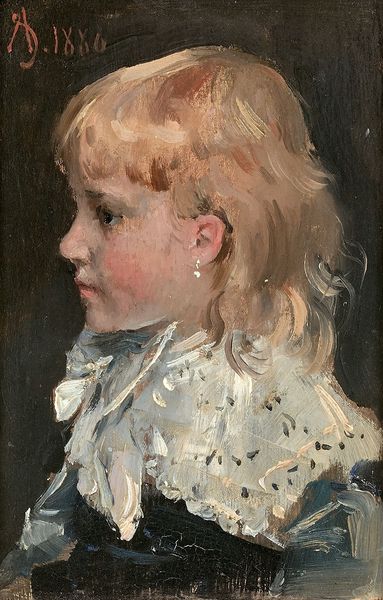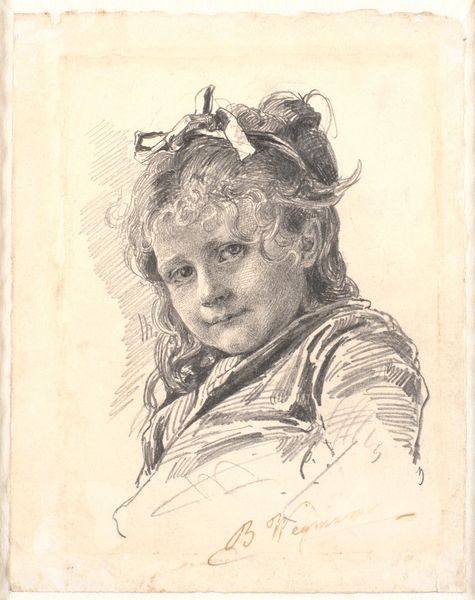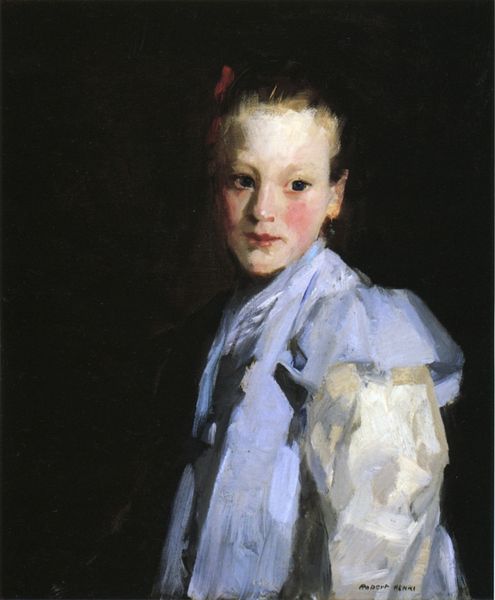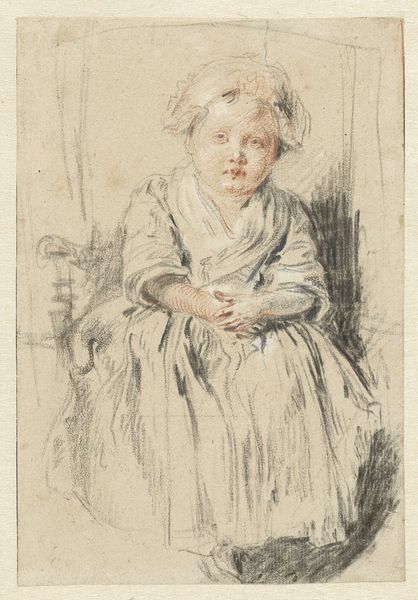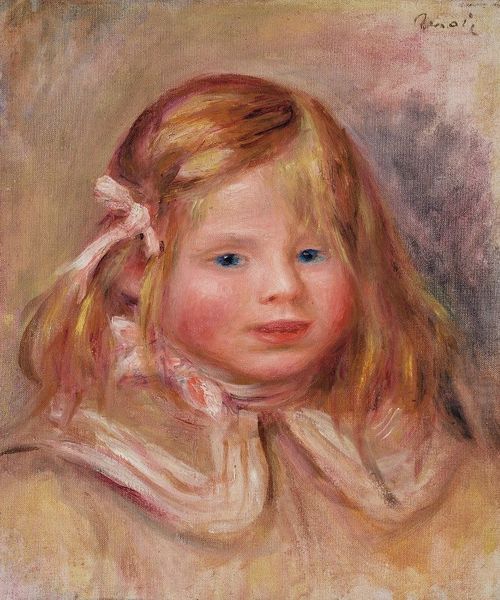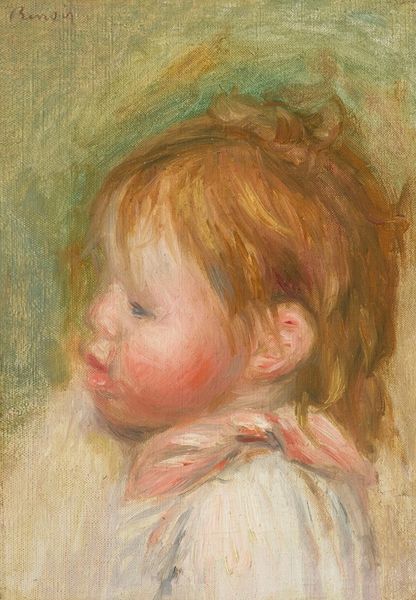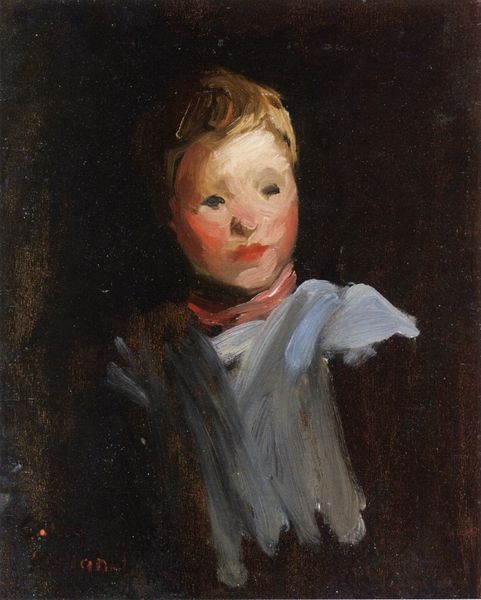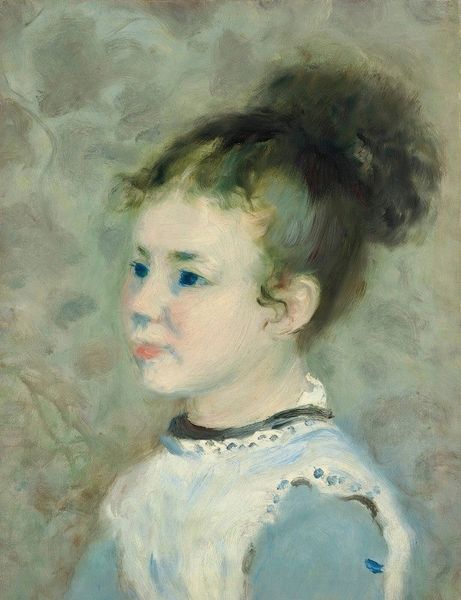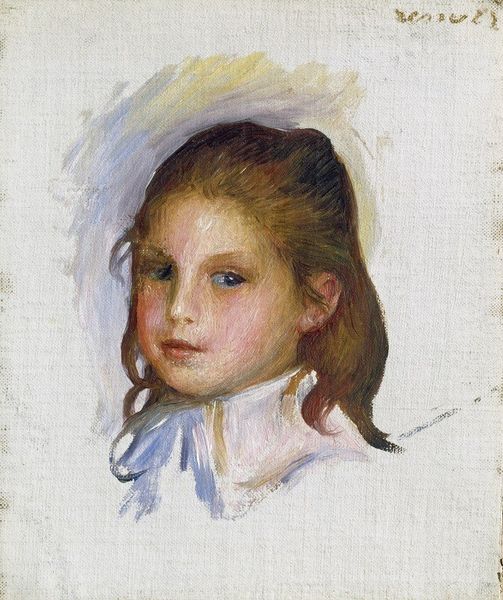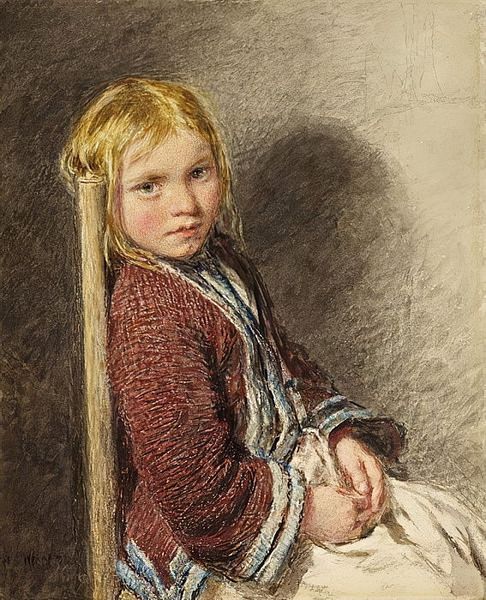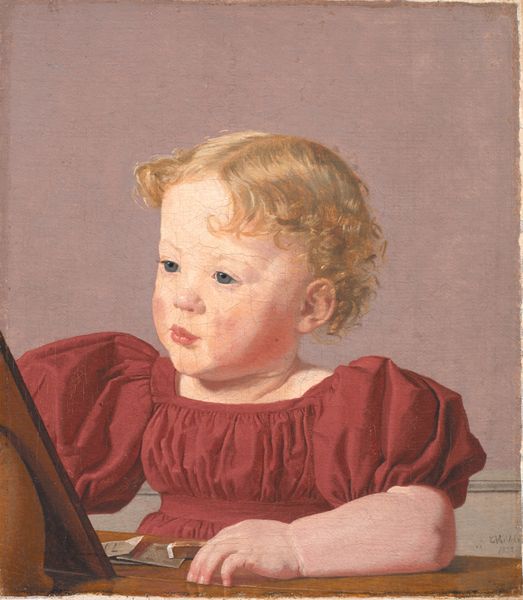
watercolor
#
portrait
#
figurative
#
figuration
#
oil painting
#
watercolor
#
romanticism
#
portrait drawing
#
genre-painting
#
portrait art
Copyright: Public Domain: Artvee
Curator: David Cox’s watercolor, "Girl in a Pinafore," from the 1840s, presents a seated young girl in profile. The loose brushstrokes are captivating. What’s your first take on this piece? Editor: The immediate impression is one of gentle melancholy. The muted colors and the girl's downcast gaze contribute to this subdued mood. It’s formally interesting how the brown hues of the chair's wooden structure juxtapose against her softer dress. Curator: Precisely. Considering the era, this piece potentially speaks volumes about gender and childhood within Victorian society. Note her pose; even the way she is seated might signal conformity. We also ought to ask questions about her class; pinafores at the time, what kind of social relations do they evoke? Editor: From a structural perspective, the artist employs watercolor masterfully, creating depth with subtle gradations. The application technique, its visible strokes, makes the medium itself prominent. I can't help but appreciate how line and shade create volume here. Curator: Yes, and that also draws my eye to her, so think about the identity this young girl has within this family, her place, what kinds of rules and relations that are being transmitted in this portrait. How does her gender position her within her context, historically? Editor: Agreed. Shifting to composition, the tight framing forces us to focus solely on the figure. It's less about narrative, and more about visual sensation. How the artist can present her face with limited means of visual encoding. Curator: Though you could read her gaze as suggestive of a lack of agency typical for girls during this period; the passivity, in the way the image depicts a kind of cultural domination and a clear representation of how they want to be seen in society. The piece then functions as a lens through which to view norms that underpin class and gender. Editor: Interesting how those same features contribute to its visual harmony as well. What do you take away most strongly from this encounter? Curator: I appreciate the artwork as an opportunity to reflect on historical contexts and the ways in which identities have been and continue to be shaped by societal structures. Editor: I'm captivated by its delicate handling of light and shadow, a perfect marriage of form and feeling.
Comments
No comments
Be the first to comment and join the conversation on the ultimate creative platform.
